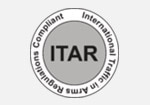Wire harnesses consist of bundles of wire, cable, or subassemblies, combined with other conductive materials, and they are used to transmit electricity in various applications. The bundling of these components makes it easier to install electrical components for signaling or power transmission. In addition, other benefits of using wire harnesses include increased productivity, lower costs, and improved safety by minimizing trip hazards and wire damage.
What Are Wire Harnesses Used for?
A wire harness, also known as a wiring assembly or cable harness, groups multiple wires, cables, or subassemblies to supply electrical power or transmit signals in many applications.
Wire harnesses have multiple applications and uses that make them suitable for many industries. A few of the main markets that use wire harnesses include the medical, military, and industrial industries. The transportation industry also frequently uses them in automobiles, trucks, buses, and planes. Other applications include industrial equipment, construction machinery, household appliances, and electronics.
The Manufacturing Process of Wire Harnesses
The wire harness manufacturing process ranges from basic to complex, depending on the end product. While it can be challenging, time-consuming, and task-oriented, a streamlined manufacturing process helps maintain efficiency and quality with each wire harness. The following is a breakdown of the different steps of the process and what they entail:
Design
While wire harnesses often appear simple, a clear, accurate design phase is critical to setting production and the manufacturing process up for success. This stage may involve choosing harness components, specifying different colors to identify specific wires, specifying all wire and cable lengths, and various other details.
Prototyping
Following the design stage, prototyping takes place. This entails developing a physical product based on the chosen design specifications. In the process, manufacturers can identify areas for improvement and determine how to approach the rest of the manufacturing process. This helps ensure optimal quality and process performance before beginning the first production run.
Production & Assembly
During production and assembly, manufacturers must meet design specifications and make sure the end product meets quality standards with minimal risk of errors. The production process still heavily relies on manual assembly even as manufacturing becomes increasingly automated.
Throughout this stage, manufacturers typically complete three main steps:
- Wire Cutting — The first step in the production phase involves cutting wires to their designated lengths using a wire-cutting machine.
- Stripping and Connections — After cutting, the next step entails stripping the wire ends to expose their cores, which allows for the attachment of connector housings, terminals, or modules.
- Assembly — The last step is the wire harness assembly process, which involves putting together the wire harness using an assembly board or workbench to put the final product together based on design specifications.
Testing
Following the core manufacturing process, manufacturers test the end product for quality assurance purposes. If the product meets quality and performance standards, the manufacturer ships the final product to the client.
Top-Quality Wire Harnesses from Electro-Prep
Various applications require reliable wire harnesses for transmitting electricity/data. If you’re in need of a wire harness for your application, Electro-prep can manufacture custom wire harnesses based on your unique requirements.
To learn more about our wire harness manufacturing capabilities, contact us today. If you would like to get started, request a quote from us and we’ll connect you with one of our experts.






